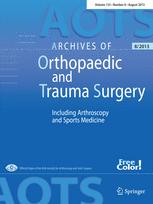
ARTHROPLASTY
Better alignment and less blood loss when minimally-invasive TKA is computer-assisted
Arch Orthop Trauma Surg. 2014 Jan;134(1):65-71. doi: 10.1007/s00402-013-1879-2. Epub 2013 Nov 8Eighty patients with knee osteoarthritis (OA) were randomized to undergo standard minimally-invasive total knee arthroplasty (TKA) with or without computer assistance, to compare the two techniques with respect to clinical and radiological outcomes. Results at 6 months indicated that computer-assisted minimally-invasive total knee arthroplasty (MICA-TKA) produced similar Knee Society Scores (KSS), Knee Society Functional Scores (KSFS), pain scores, and range of motion, with less blood loss and better radiological alignment, compared to minimally-invasive TKA (MI-TKA). Both procedures were safe, with no incidence of infection, neurovascular complication or revision surgery within this present sample.
Unlock the full ACE Report
You have access to {0} free articles per month.Click below to unlock and view this {1}
Unlock NowCritical appraisals of the latest, high-impact randomized controlled trials and systematic reviews in orthopaedics
Access to OrthoEvidence podcast content, including collaborations with the Journal of Bone and Joint Surgery, interviews with internationally recognized surgeons, and roundtable discussions on orthopaedic news and topics
Subscription to The Pulse, a twice-weekly evidence-based newsletter designed to help you make better clinical decisions
Exclusive access to original content articles, including in-house systematic reviews, and articles on health research methods and hot orthopaedic topics
Or upgrade today and gain access to all OrthoEvidence content for just $1.99 per week.
Already have an account? Log in


Subscribe to "The Pulse"
Evidence-Based Orthopaedics direct to your inbox.
{0} of {1} free articles
Become an OrthoEvidence Premium Member. Expand your perspective with high-quality evidence.
Upgrade Now












































































